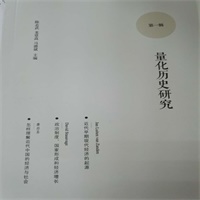
【量化历史网上讲座系列】(Quantitative History Webinar Series)由香港大学陈志武教授和马驰骋博士联合发起并举办,旨在介绍前沿量化历史研究成果、促进同仁交流,推广量化方法在历史研究中的应用。本系列讲座由国际量化历史学会、香港大学经济管理学院和亚洲环球研究所全力支持和承办。
第45场讲座信息
Commitment Failure within Bureaucracy: lessons from three failed fiscal rationalization reforms in the Qing period China
主讲人: Max Yu Hao, Associate Professor, School Of Economics, Peking University
时间:2021年9月9日 16:00 - 15:30 (北京时间,星期四)
讲座语言:英文
讲座介绍
Max Yu Hao of Peking University and his co-author examine the role of the commitment problem within bureaucracy in explaining why formal taxation was low and, whereas informal levies could not be eradicated throughout the Qing period. During much of the Qing period, the central government collected most of formal land taxes, while provincial and county governments relied on unsupervised informal levies to finance their regular and irregular expenses, causing severe corruption and frequent tax protests by the commoners.
The state made several attempts to solve this problem by allowing locals to collect a fixed amount of land surtax, which was shared among the provinces and counties, and spent on specified expenditure items. This was viewed as fiscal rationalization reforms (Zelin, 1984). However, such rationalization was incomplete without solving the commitment problem within bureaucracy. In particular, fiscal transparency made it easier for the upper governments to collect lower revenues at their wills or divert lower revenues to upper expenditures. Such “commitment failure” forced ill-financed local governments to extract excessive extralegal levies from peasants, which ultimately caused tax revolts. So ironically, reforms intended for eradicating informal levies resulted in even more informal levies and tax revolts, consistent with the theoretical proposal by Ma and Rubin (2018).
In this Quantitative History Webinar, Max Yu Hao will present a trilogy of papers exploring the impact of fiscal rationalizations on public goods provision, the size of informal taxation, and tax burdens. Overall, the findings help explain why fiscal rationalization was always unsuccessful, and state capacity remained low throughout the late Imperial China, and this problem remains unresolved.
Max's co-author: Kevin Zhengcheng Liu (HKU)
NOTES
The first paper tests the impact of Yongzheng’s within-province centralization of informal levies (耗羡归公) in 1720s on famine relief. After the reform, the formalized surtaxes contained three expenditure items: county government fees (州县养廉银) , provincial government fees (省养廉银), and provincial public funds (省公费). The empirical results show that the reform increased the frequency of famine relief in cases of exceptional disasters relative to other weather conditions, and the effects were driven by the provincial public funds. Moreover, the reform facilitated intertemporal smoothing and interregional risk sharing. However, the effects declined as soon as the central government broke its promise and began to appropriate provincial public funds.
The second paper explores Qianlong’s fiscal reform in 1785, which centralized county government fees to the provinces, which would be sent back to the counties as transfer payments. The paper finds that after 1785 the prefectures with larger quotas of county government fees suffered from greater number of unfulfilled transfer payments, and collected more extralegal levies (measured by the number of lawsuits against such actions), and encountered greater amount of tax revolts. By 1840, the county government fees had become part of provincial revenue, and the counties completely relied on extralegal levies.
The last paper focuses on the last 40 years of Qing. After the Taiping Rebellion (1851-1865), the Qing state allowed the counties to collect a surtaxes that was positively linked to the formal land tax quotas (known as 钱漕盈余), as new source of county government fees. However, after 1900 the central government faced much greater expenditures such as huge war indemnities and modernization projects. It shifted the burden to the provinces, who in turn shifted the burden to the counties. The paper finds that after 1900, prefectures with larger formal land tax quotas were imposed with greater share of war indemnities, levied more extralegal levies, and encountered greater amount of tax revolts.
“量化历史研究”公众号由陈志武(香港大学冯氏基金讲席教授、原耶鲁大学教授)和龙登高(清华大学教授)及其团队——林展(中国人民大学)、熊金武(中国政法大学)、何石军(武汉大学)、蒋勤(上海交通大学)、彭雪梅(中山大学)等人负责。向学界和业界朋友,定期推送量化历史研究经典、前沿文献。同时作为“量化历史讲习班”信息交流平台。喜欢我们的朋友请搜寻公众号:QuantitativeHistory,或扫描下面二维码关注。
我们也诚邀八方学人发送电邮建言献策。邮箱: lianghualishi@sina.com。

